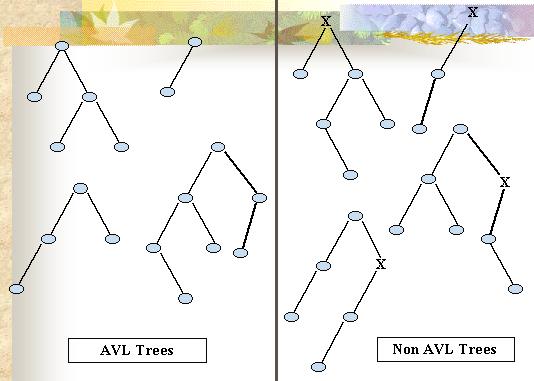Slide 14.6: An AVL tree (cont.)
Home

|
Slide 14.4: A binary search tree (cont.) Slide 14.6: An AVL tree (cont.) Home |

|
A balanced binary search tree where the height of the two subtrees of a node differs by at most one.The figure below shows some examples of AVL and non-AVL trees. In each of the non-AVL trees, the root of the subtree that is not in balance is marked with an X.
| The operations used to build and maintain AVL trees will not be covered in this course. Just note that look-up, insertion, and deletion are O(log2n), where n is the number of nodes in the tree. |

|